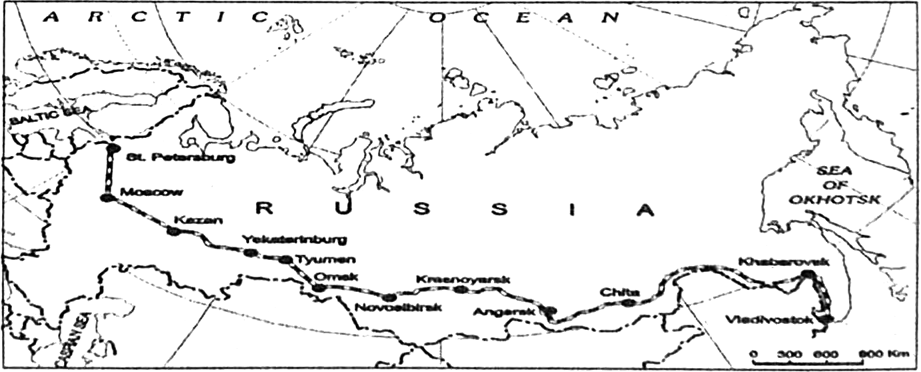State the advantages and disadvantages of inland water transport.
Mention any five characteristics of rail transport of Europe.
Describe the advantages of air transport with examples.
Air transport is the fastest means of transportation, but it is very costly.
(i) Being fast, it is preferred by passengers for long-distance travel. Valuable cargo can be moved rapidly on a world-wide scale. It is often the only means to reach inaccessible areas.
(ii) Air transport has brought about a connectivity revolution in the world. The frictions created by mountainous snow fields or inhospitable desert terrains have been overcome. The accessibility has increased.
(iii) The airplane brings varied articles to the Eskimos in Northern Canada unhindered by the frozen ground.
(iv) In the Himalayan region, the routes are often obstructed due to landslides, avalanches or heavy snowfall. At such times, air travel is the only alternative to reach a place.
(v) Airways also have great strategic importance. The air strikes by U.S. and British forces in Iraq bears testimony to this fact.
Describe the economic significance of Trans-Siberian Railway.
Trans-Siberian Railway: It is the longest railway line of the world. It is 9332 km long. It runs from Vladivostok to St. Petersburg in the west on the Baltic sea coast. Some of the main stations on the line are Moscow, Ryason, Sizhran, Omsk, Novo- Sibirsk, Tomsk, Irkutsk.
Economic Importance:
1. This railway line transport machinery and other implements from the industrially develop centres of European Russia to the regions in the eastern Siberia. Thus it has helped in the development of resources of the Siberian Russia to the maximum.
2. Siberian part of Russia is an agriculturally developed region. Food grains, cotton and sugarbeet are transported to the western region.
3. It contributes in the development of industries by providing raw material and power resources in Siberia from west to the east.
4. A number of navigable rivers like Volga, Ob and Amur are the important points of transshipment.
5. Trans-Siberian Railway have played important role in the integration and political stability of Russia.

Fig.: Trans-Siberian Railway
Define the term highway. Mention the importance of highway by giving three examples from different parts of the world.
Highways are metalled roads connecting distant places. These are constructed in such a way that vehicles could ply in an unobstructed manner.
Importance:
